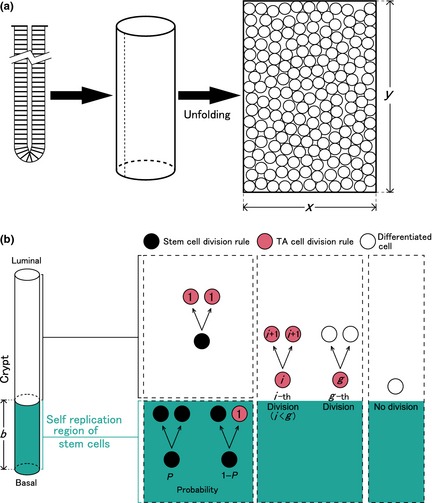Figure 1.

Model of murine colonic crypt. (a) Modelling of the crypt. A crypt is modelled as a cylindrical surface, which is unfolded to a two‐dimensional surface. Cells are spatially arranged on this rectangular surface whose width and height are given by x and y, respectively. (b) Scenario of cell proliferation and differentiation. Two regions are considered in a crypt. Lower portion of the crypt, whose height is b, is defined as the self‐replication region of stem cells. Within this region, a stem cell divides symmetrically and produces two stem cells with a probability P (0 ≤ P ≤ 1). When it divides asymmetrically, it produces a stem cell and a first‐generation transit amplifying (TA) cell with a probability 1 − P. Outside this region, a stem cell divides symmetrically and produces two‐first‐generation TA cells. Regardless of the region, a TA cell divides symmetrically and differentiates after g‐th divisions.
